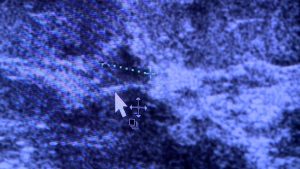Cancer survivor is on a mission to save other women’s lives
Apr 5, 2018, 6:28 PM | Updated: 8:46 pm
MURRAY— Yas Simonian has a passion for life. You can often find her dancing and snapping her fingers to Greek music as she cooks in her kitchen.

Today, Yas Simonian, a 13-year breast cancer survivor, enjoys dancing to Greek music in her kitchen as she cooks.
She is also passionate about one more thing: mammograms. Simonian is a 13-year breast cancer survivor and credits her life to routine screening.
“Go get a mammogram because it saves lives. It did mine,” she said.
Simonian went in for her annual screening one year and was not expecting unusual news.
“You couldn’t see it, you couldn’t feel it. My tumor was not palpable,” she said.
But she got a call back from Intermountain Healthcare’s Dr. Brett Parkinson who identified cancer.
He told Simonian, “You came in at just the right time.” She credits her life to Dr. Parkinson’s eagle eye and staff at Intermountain Medical Center’s Breast Care Center. She said Parkinson has an ability to see things other people cannot.

Although it was subtle, Dr. Brett Parkinson identified cancer on Simonian’s ultrasound 13 years ago.
After a mastectomy, chemotherapy, and reconstructive plastic surgery, Simonian is now cancer free.
“I wouldn’t have been here now if I didn’t go first,” she said.
Simonian’s story isn’t unique though. Too many women in Utah fail to get screened.
“We (Utah) usually rank 46th through 50th in the United States for screening compliance,” Parkinson said.
After her own experience, Simonian has become an advocate for women’s health. In response to Utah’s low screening numbers, Simonian exclaimed, “Utah moms, what is the matter with you guys?”

Yas Simonian sits with Intermountain Medical Center’s Dr. Brett Parkinson reviewing her ultrasound from 2005 when she was diagnosed with breast cancer.
“Being consistently bad is not a good thing, and we are consistently bad,” Parkinson said. He attributes the state’s low numbers to Utah culture. “Women, particularly Utah women, take care of everybody they take care of themselves,” Parkinson said.
However, he says that is no excuse. “People don’t have to be dying from this disease as they were before,” Parkinson said. Neglecting regular screening affects more than the individual. “If they don’t take care of themselves, they can’t take care of others,” he added.
Parkinson said people should not worry about the risks of a mammogram. He debunked the myth that mammography can cause cancer. The risks are negligible, Parkinson added. “The amount of radiation that a woman gets from a mammogram is minuscule,” he said.
Simonian said many women are afraid to go in for screening because they think the process is painful.
“Plucking my eyebrows hurts more! It’s not a big deal,” she said.
The benefits of getting screened early on can pay off. “If it’s found on a screening mammogram, chances are it will be a stage 1 (cancer), it will be treatable, and it will be curable,” Parkinson said.

Although Yas Simonian is proud to be cancer free today, she still goes in for a regular mammogram screening once a year.
Yet, the dangers of waiting can be tragic.
“What’s really sad is when women come in with a lump that they’ve had for several years and that lump has already metastasized to other regions of the body, which makes treatment so much more difficult,” Parkinson said.
Simonian said it is simple: “Just get with the program and go get a mammogram.”
Parkinson recommends women go in for a yearly mammogram starting at age 40. He said women with a family history of breast cancer can start screening with more powerful tools like MRI.






